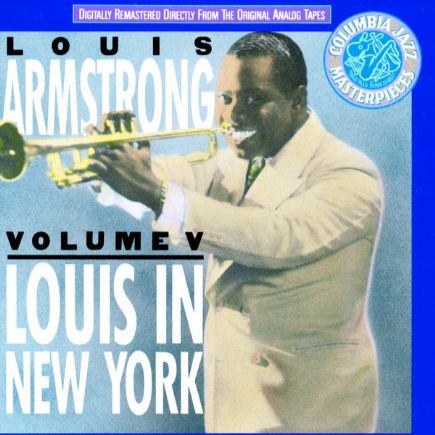After You’ve Gone: la séparation mise en mélodie
Composée en 1918 par Turner Layton sur des paroles de Henry Creamer, After You’ve Gone s’inscrit parmi les grandes ballades du répertoire populaire américain. Bien qu’elle ait probablement été écrite pour la comédie musicale So Long, Letty, aucune partition ni version officielle n’a vu le jour à l’époque, ce qui n’a pas empêché la chanson de connaître une destinée remarquable.
Sa mélodie poignante, conjuguée à un texte empreint de douleur et de nostalgie, évoque les tourments de la séparation amoureuse. Le thème, universel, a trouvé un écho immédiat auprès du public. Le premier enregistrement de référence est celui de Marion Harris, également en 1918, mais c’est en 1927 que la chanson accède véritablement au rang de standard, grâce aux interprétations de Bessie Smith et de Sophie Tucker.
Au fil des décennies, les artistes de jazz s’emparent de cette pièce avec une liberté toujours plus affirmée. Ella Fitzgerald en offre une version récompensée par un Grammy Award en 1981, tandis que Benny Goodman, véritable artisan de sa diffusion, en propose pas moins d’une quarantaine de versions.
After You’ve Gone est devenue bien plus qu’une chanson de rupture : elle est un terrain d’expression privilégié pour les chanteurs et instrumentistes, une matière vivante où la douleur se transforme en élégance musicale. Son statut de standard repose autant sur la richesse de son matériau que sur la diversité des lectures qu’elle continue d’inspirer.
Louis Armstrong: la rupture sublimée en manifeste jazz
Enregistrée à New York le 26 novembre 1929, la version de After You’ve Gone interprétée par Louis Armstrong incarne un moment clé de l’évolution du jazz. Publiée dans Louis Armstrong – Volume 5: Louis in New York, cette session fait partie d’une série précieuse d’enregistrements historiques éditée par Columbia. Ce cinquième volume met en lumière l’Armstrong de 1929, à la tête d’un grand orchestre et entouré de musiciens d’exception tels que Earl Hines au piano, Carroll Dickerson au violon et Zutty Singleton à la batterie.
Au fil des pistes, l’album alterne formats et ambiances : jam session dirigée par Armstrong sur Knockin’ a Jug, accompagnements vocaux pour Seger Ellis et Victoria Spivey, ou encore performances marquantes avec l’orchestre de Luis Russell et les anciens du big band de Dickerson. On y trouve notamment des interprétations devenues emblématiques telles que I Can’t Give You Anything But Love, Mahogany Hall Stomp, Ain’t Misbehavin’, Black and Blue, Some of These Days et When You’re Smiling — autant de titres qui ont contribué à façonner l’esthétique du swing à venir.
After You’ve Gone y figure dans deux prises alternatives, dévoilées pour la première fois dans cette compilation. Ces versions témoignent du style singulier d’Armstrong, à la fois dans sa manière de faire chanter la trompette et dans son interprétation vocale profondément expressive. Son phrasé souple, son usage inventif de la sourdine et son sens aigu de l’improvisation confèrent à la pièce une vitalité saisissante. Ce qui, chez d’autres, serait une simple chanson de séparation devient chez lui une affirmation de liberté, un geste de dignité émotionnelle.
After You’ve Gone: la separación puesta en melodía
Compuesta en 1918 por Turner Layton con letra de Henry Creamer, After You’ve Gone se inscribe entre las grandes baladas del cancionero popular estadounidense. Aunque probablemente fue concebida para el musical So Long, Letty, no se publicó partitura ni grabación oficial en aquel momento, lo que no impidió que la canción siguiera su propio destino.
Con una melodía conmovedora y un texto cargado de nostalgia, la canción expresa el dolor de una separación amorosa. Su temática universal encontró rápidamente eco entre el público. La primera versión de referencia fue la de Marion Harris en 1918, pero fue en 1927 cuando el tema se consolidó como un estándar, gracias a las interpretaciones de Bessie Smith y Sophie Tucker.
Décadas más tarde, grandes figuras del jazz se apropiarían de esta obra con renovada libertad. Ella Fitzgerald fue premiada con un Grammy por su interpretación en 1981, mientras que Benny Goodman grabó más de cuarenta versiones, contribuyendo decisivamente a su difusión.
After You’ve Gone ha trascendido su origen como canción de despedida: se ha convertido en un espacio expresivo privilegiado para cantantes e instrumentistas, una obra viva que continúa inspirando nuevas lecturas y emociones.
Louis Armstrong: la ruptura elevada a manifiesto jazzístico
Grabada en Nueva York el 26 de noviembre de 1929, la versión de After You’ve Gone interpretada por Louis Armstrong representa un momento decisivo en la evolución del jazz. Publicada en Louis Armstrong – Volume 5: Louis in New York, esta sesión forma parte de una valiosa serie de registros históricos editada por Columbia. Este quinto volumen destaca la figura de Armstrong al frente de una gran orquesta en 1929, acompañado por músicos de primer nivel como Earl Hines al piano, Carroll Dickerson al violín y Zutty Singleton a la batería.
El álbum alterna formatos y ambientes: sesión improvisada dirigida por Armstrong en Knockin’ a Jug, acompañamientos vocales para Seger Ellis y Victoria Spivey, y actuaciones destacadas con la orquesta de Luis Russell y los antiguos miembros del big band de Dickerson. Entre ellas, versiones emblemáticas de I Can’t Give You Anything But Love, Mahogany Hall Stomp, Ain’t Misbehavin’, Black and Blue, Some of These Days y When You’re Smiling — piezas que contribuyeron decisivamente al surgimiento del swing.
After You’ve Gone aparece en dos tomas alternativas, reveladas por primera vez en esta recopilación. Estas versiones destacan el estilo único de Armstrong, tanto en su enfoque instrumental como vocal. Su fraseo fluido, su uso creativo de la sordina y su capacidad para improvisar con soltura otorgan al tema una energía contagiosa. Lo que podría ser una simple canción de despedida se transforma, en sus manos, en una afirmación de libertad y orgullo emocional.
After You’ve Gone: la separazione in melodia
Composta nel 1918 da Turner Layton su testo di Henry Creamer, After You’ve Gone è tra le grandi ballate del repertorio popolare americano. Sebbene si ritenga che fosse stata scritta per il musical So Long, Letty, nessuna partitura ufficiale né registrazione vide la luce all’epoca — ma ciò non impedì al brano di intraprendere un percorso straordinario.
La melodia struggente e il testo intriso di dolore e nostalgia evocano con delicatezza i tormenti di una separazione amorosa. Il tema, universale, trovò subito un forte riscontro nel pubblico. La prima registrazione significativa fu quella di Marion Harris, anch’essa del 1918, ma fu nel 1927 che la canzone divenne davvero uno standard, grazie alle interpretazioni di Bessie Smith e Sophie Tucker.
Nel corso dei decenni, molti artisti jazz hanno rivisitato il brano con sempre maggiore libertà espressiva. Ella Fitzgerald ne ha offerto una versione premiata con un Grammy nel 1981, mentre Benny Goodman, grande promotore del pezzo, ne ha registrato oltre quaranta versioni.
After You’ve Gone è diventata molto più di una semplice canzone d’addio: è un terreno di espressione privilegiato per cantanti e strumentisti, una materia viva in cui il dolore si sublima in eleganza musicale. Il suo status di standard si fonda tanto sulla qualità della scrittura quanto sulla varietà di riletture che continua a suscitare.
Louis Armstrong: la separazione trasformata in dichiarazione jazz
Registrata a New York il 26 novembre 1929, la versione di After You’ve Gone interpretata da Louis Armstrong rappresenta un passaggio cruciale nell’evoluzione del jazz. Pubblicata in Louis Armstrong – Volume 5: Louis in New York, questa sessione appartiene a una preziosa serie di registrazioni storiche prodotta dalla Columbia. Il quinto volume mette in risalto un Armstrong alla guida di una grande orchestra, affiancato da musicisti d’eccezione come Earl Hines al pianoforte, Carroll Dickerson al violino e Zutty Singleton alla batteria.
L’album alterna momenti diversi: una jam session guidata da Armstrong su Knockin’ a Jug, accompagnamenti vocali per Seger Ellis e Victoria Spivey, e dieci interpretazioni fondamentali con l’orchestra di Luis Russell o i superstiti del big band di Dickerson. Tra queste, spiccano versioni storiche di I Can’t Give You Anything But Love, Mahogany Hall Stomp, Ain’t Misbehavin’, Black and Blue, Some of These Days e When You’re Smiling — brani che contribuirono in modo decisivo all’emergere dello swing.
After You’ve Gone viene proposta in due versioni alternative, pubblicate per la prima volta in questa raccolta. Armstrong vi imprime il suo marchio inconfondibile, sia con la tromba che con la voce. Il fraseggio flessibile, l’uso inventivo della sordina e la padronanza dell’improvvisazione danno al brano un’intensità straordinaria. Ciò che potrebbe sembrare una semplice canzone di addio diventa, sotto la sua interpretazione, una dichiarazione di autonomia emotiva.
After You’ve Gone: separation set to melody
Written in 1918 by Turner Layton with lyrics by Henry Creamer, After You’ve Gone stands as one of the great ballads in the American popular repertoire. Although it is believed to have been written for the musical So Long, Letty, no official score or recording was released at the time — yet the song went on to have a remarkable journey.
Its poignant melody, coupled with lyrics steeped in sorrow and nostalgia, captures the emotional weight of romantic separation. The theme, universally relatable, immediately resonated with audiences. The first significant recording came from Marion Harris in 1918, but it was in 1927 that the song truly earned standard status, thanks to interpretations by Bessie Smith and Sophie Tucker.
Over the decades, jazz musicians have embraced the piece with ever-growing freedom. Ella Fitzgerald’s rendition earned her a Grammy Award in 1981, while Benny Goodman — a tireless advocate of the tune — recorded over forty versions.
After You’ve Gone has evolved into much more than a breakup song: it is a privileged space for vocal and instrumental expression, a living work where sorrow is transformed into musical elegance. Its standing as a standard rests both on the richness of its composition and the diversity of interpretations it continues to inspire.
Louis Armstrong: heartbreak reimagined as jazz declaration
Recorded in New York on November 26, 1929, Louis Armstrong’s version of After You’ve Gone captures a pivotal moment in the evolution of jazz. Released as part of Louis Armstrong – Volume 5: Louis in New York, this session belongs to a remarkable Columbia series dedicated to Armstrong’s early work. The fifth volume highlights Armstrong leading a 1929 big band, supported by an outstanding cast including Earl Hines on piano, Carroll Dickerson on violin, and Zutty Singleton on drums.
The album blends formats and moods: a jam session with Knockin’ a Jug, vocal accompaniments for Seger Ellis and Victoria Spivey, and ten striking performances with the Luis Russell Orchestra or former members of the Carroll Dickerson band. Among them are landmark recordings of I Can’t Give You Anything But Love, Mahogany Hall Stomp, Ain’t Misbehavin’, Black and Blue, Some of These Days, and When You’re Smiling — all of which helped shape the foundations of the swing era.
After You’ve Gone appears here in two alternate takes, released for the first time in this collection. Armstrong’s unmistakable style is fully on display: his supple phrasing, inventive use of the mute, and seamless improvisation give the performance extraordinary vitality. What might otherwise be a simple breakup song becomes, through his interpretation, a bold statement of emotional autonomy.


After You’ve Gone–22.07.1918–Marion HARRIS
After You’ve Gone–27.01.1927–THE CHARLESTON CHASERS
After You’ve Gone–02.03.1927–Bessie SMITH
After You’ve Gone–04.02.1935–Coleman HAWKINS
After You’ve Gone–13.07.1935–Benny GOODMAN
After You’ve Gone–28.01.1937–Roy ELDRIDGE
After You’ve Gone–05.06.1941–Gene KRUPA & Roy ELDRIDGE
After You’ve Gone–28.01.1946–Charlie PARKER
